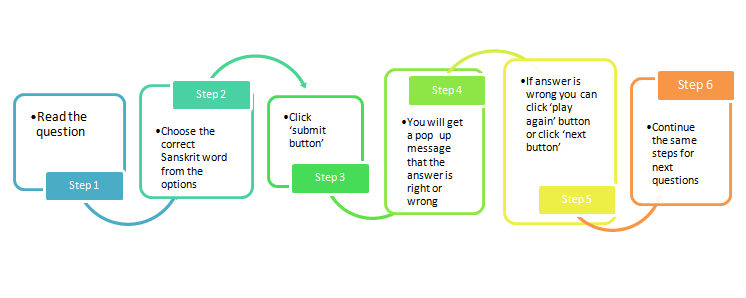

Pick the right word [DviteeyaVibhakti]
In Sanskrit, there are eight ways to use a noun. We call them “cases.” In Sanskrit, they are called विभक्ति (vibhakti). There are total 7 such cases. Each case can express many different meanings, but each has a basic meaning that is easy to remember.
Changing the ending of the word depends on many things:
- The case you want to use;
- Whether the word is singular, plural, or dual;
- Whether it is masculine, feminine, or neuter; and its natural ending.
The eight cases are:
Cases 2-7 show how the subject relates to the object.
|
विभक्तयः |
Function |
Preposition |
|
प्रथमा [nominative] |
कर्ता [subject] |
- |
|
द्वितीया [accusative] |
कर्मा [object] |
to |
|
तृतीया [instrumental] |
करणम् [instrument] |
by/with/through |
|
चतुर्थी [dative] |
सम्प्रदानम् [receiver] |
to /for |
|
पञ्चमी [ablative] |
अपादानम् [point of separation] |
from |
|
षष्ठि [genitive] |
सम्बन्दः [relation] |
of |
|
सप्तमी [locative] |
अधिकरणम् [location] |
in/on/at/among |
|
सम्बोधन प्रथमा [vocative] |
सम्बोधनम् [to address someone] |
oh ! |
Here we are discussing in detail on Objective /Accusative Case.
Case 2: The Objective / Cause of Action— “Accusative”
द्राविडो वनं गच्छति|
Dravid goes to the forest.
Here the word “forest” (vana) is in the second case (accusative), as vanam, to show that it is the objective of Dravid’s movement. The forest is the motivator that causes his movement.
Some examples
HOW TO PLAY
